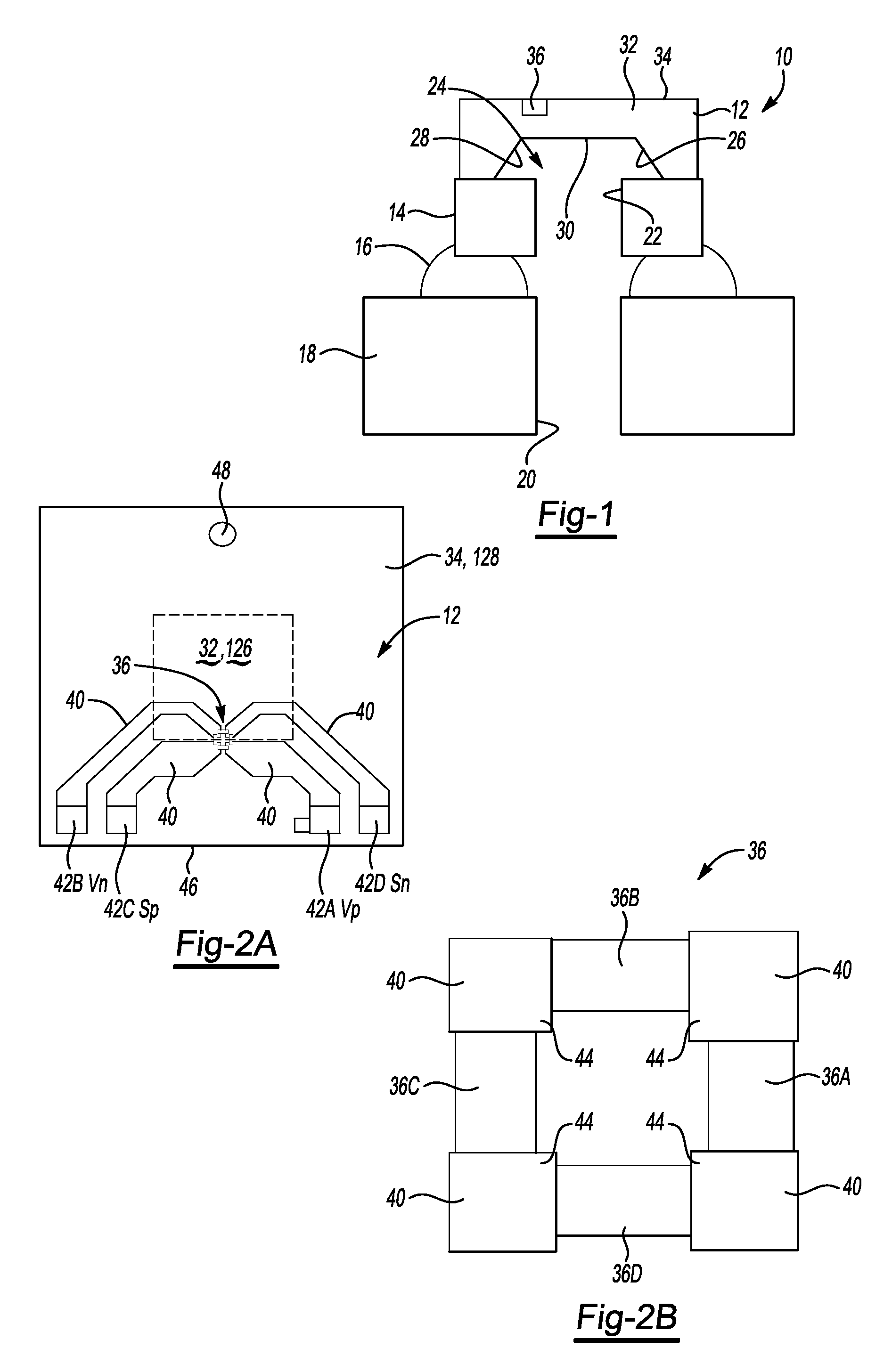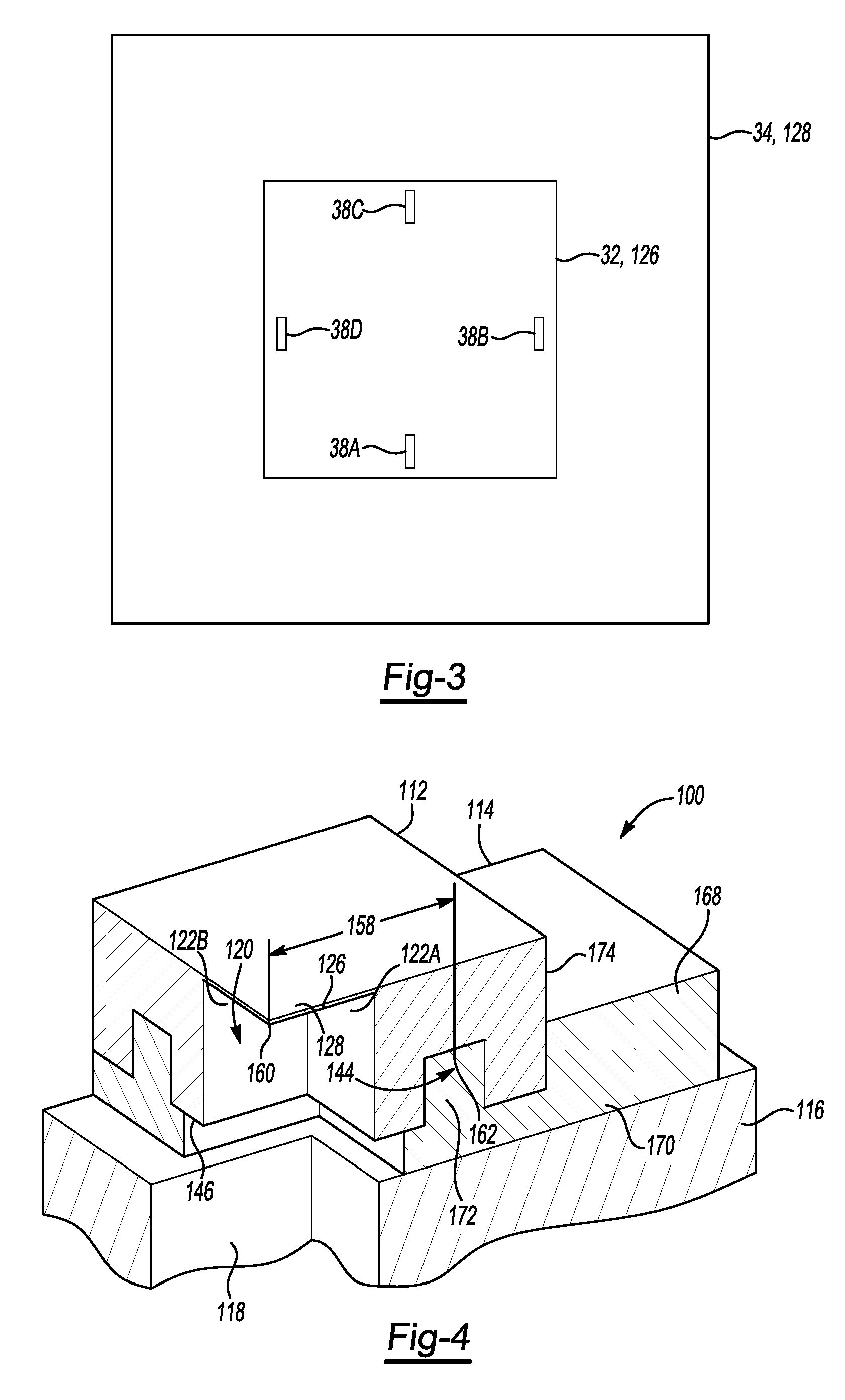Semiconductor sensing device to minimize thermal noise
a sensing device and semiconductor technology, applied in the field of microelectromechanical system (mems) pressure sensing elements, can solve the problems of resistor stress, inaccurate pressure reading of the pressure sensing element, and affecting the pressure reading detected, so as to reduce or eliminate thermally induced stresses or thermal noise
- Summary
- Abstract
- Description
- Claims
- Application Information
AI Technical Summary
Benefits of technology
Problems solved by technology
Method used
Image
Examples
Embodiment Construction
[0035]The following description of the preferred embodiment(s) is merely exemplary in nature and is in no way intended to limit the invention, its application, or uses.
[0036]A pressure sensor according to embodiments of the present invention is shown in FIGS. 4-11, generally at 100. The sensor 100 includes a pressure sensing element 112, an adhesive 114, and a housing substrate 116. The pressure sensing element 112 shown in FIGS. 4-7 is made from silicon, and is connected to the housing substrate 116 using the adhesive 114.
[0037]Formed as part of the housing substrate 116 is an aperture 118. The aperture 118 is in fluid communication with a cavity, shown generally at 120, where the cavity 120 is formed as part of the pressure sensing element 112. In one embodiment, the cavity 120 is formed using a dry etch, deep reactive ion etch (DRIE), but it is within the scope of the invention that other processes may be used. The pressure sensing element 112 includes a plurality of substantiall...
PUM
| Property | Measurement | Unit |
|---|---|---|
| thickness | aaaaa | aaaaa |
| thickness | aaaaa | aaaaa |
| operating temperature | aaaaa | aaaaa |
Abstract
Description
Claims
Application Information
 Login to View More
Login to View More - R&D
- Intellectual Property
- Life Sciences
- Materials
- Tech Scout
- Unparalleled Data Quality
- Higher Quality Content
- 60% Fewer Hallucinations
Browse by: Latest US Patents, China's latest patents, Technical Efficacy Thesaurus, Application Domain, Technology Topic, Popular Technical Reports.
© 2025 PatSnap. All rights reserved.Legal|Privacy policy|Modern Slavery Act Transparency Statement|Sitemap|About US| Contact US: help@patsnap.com



